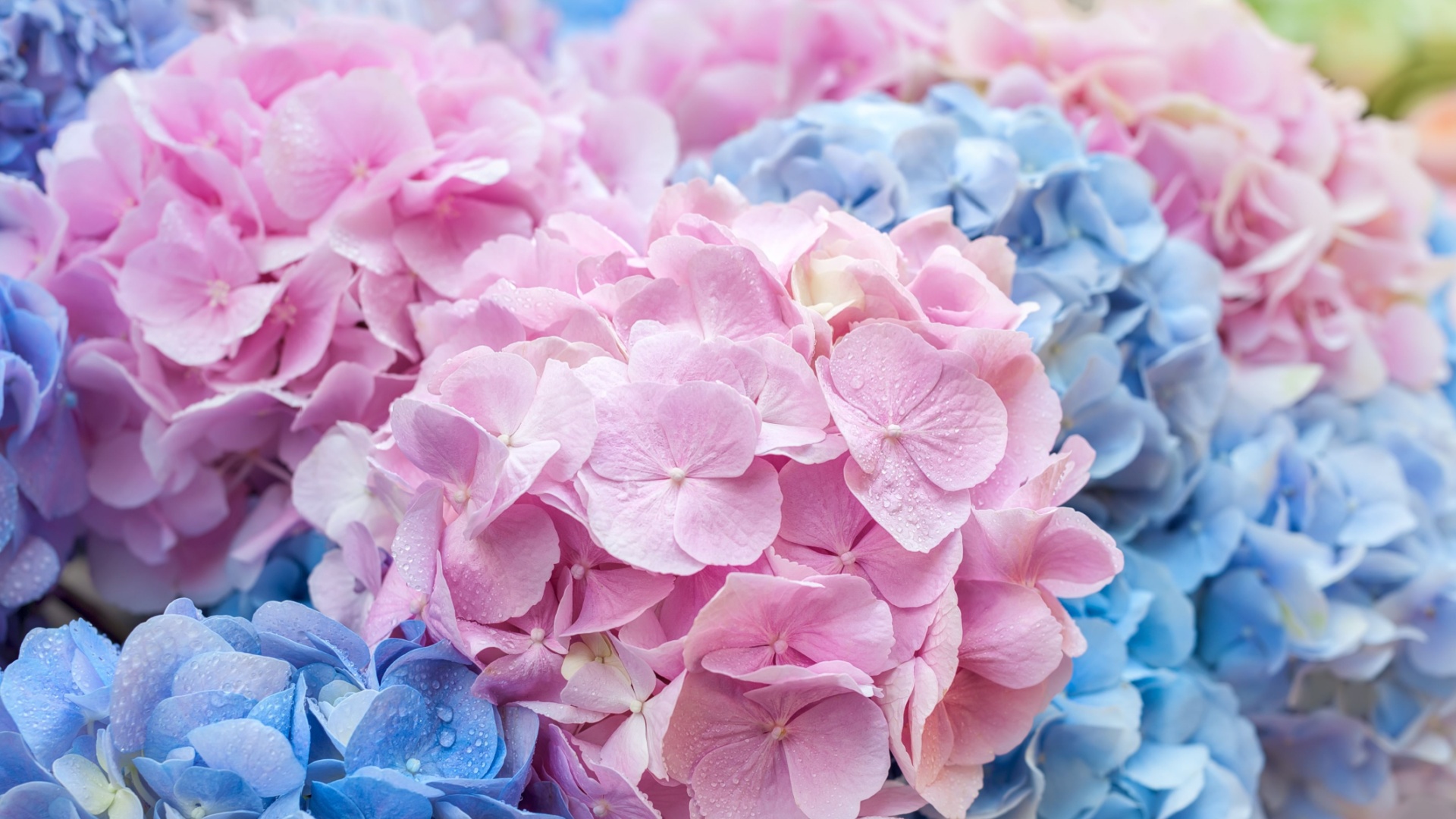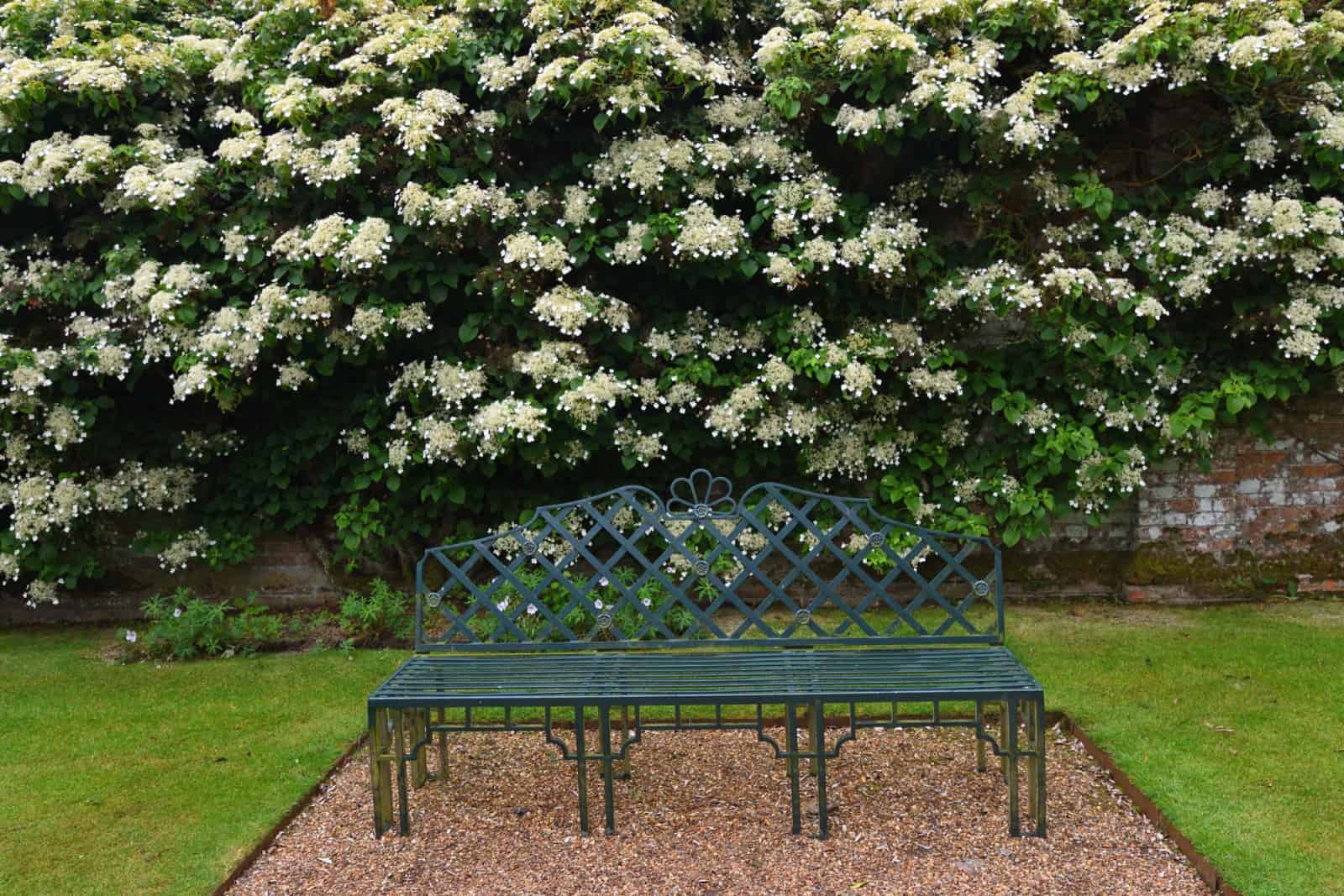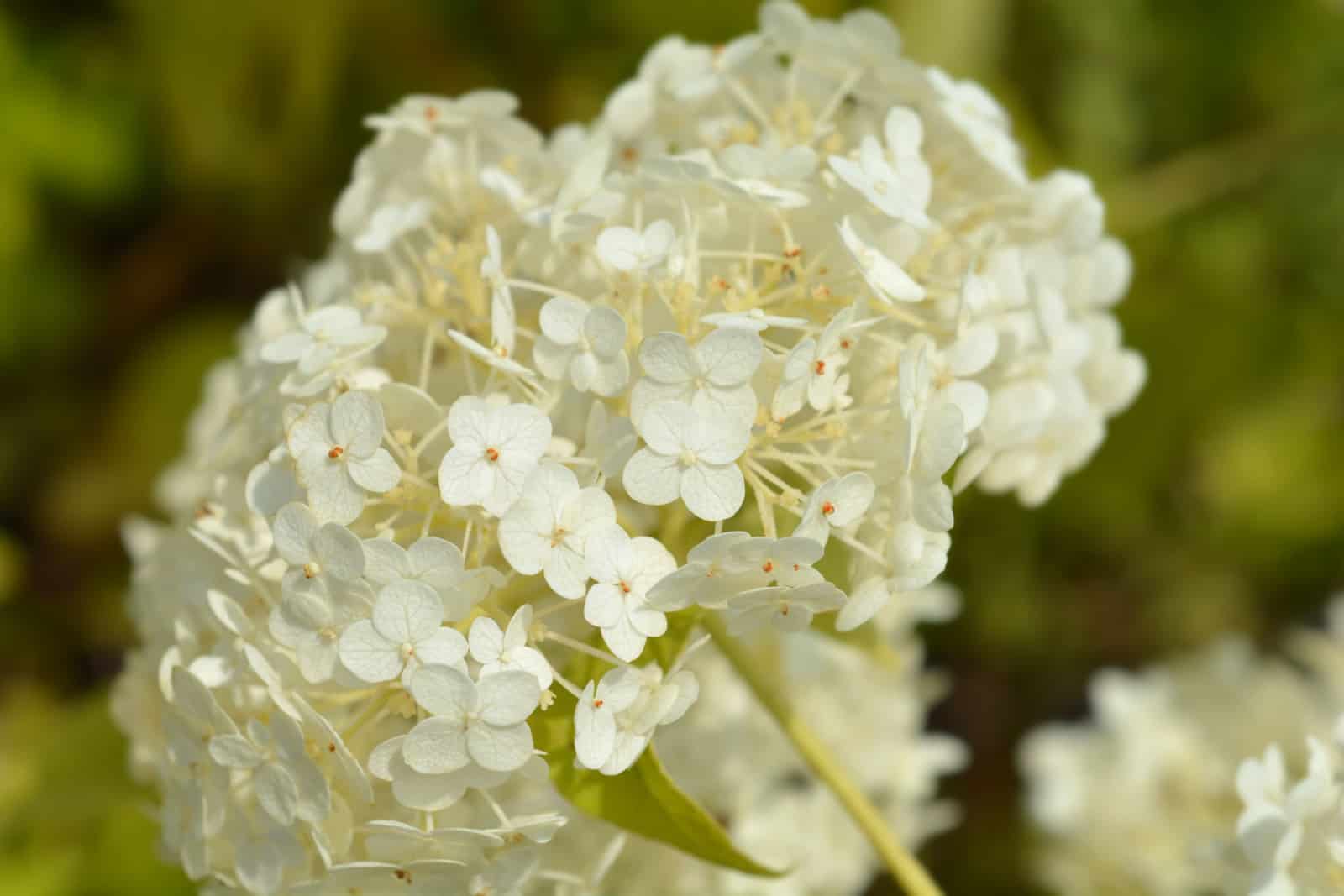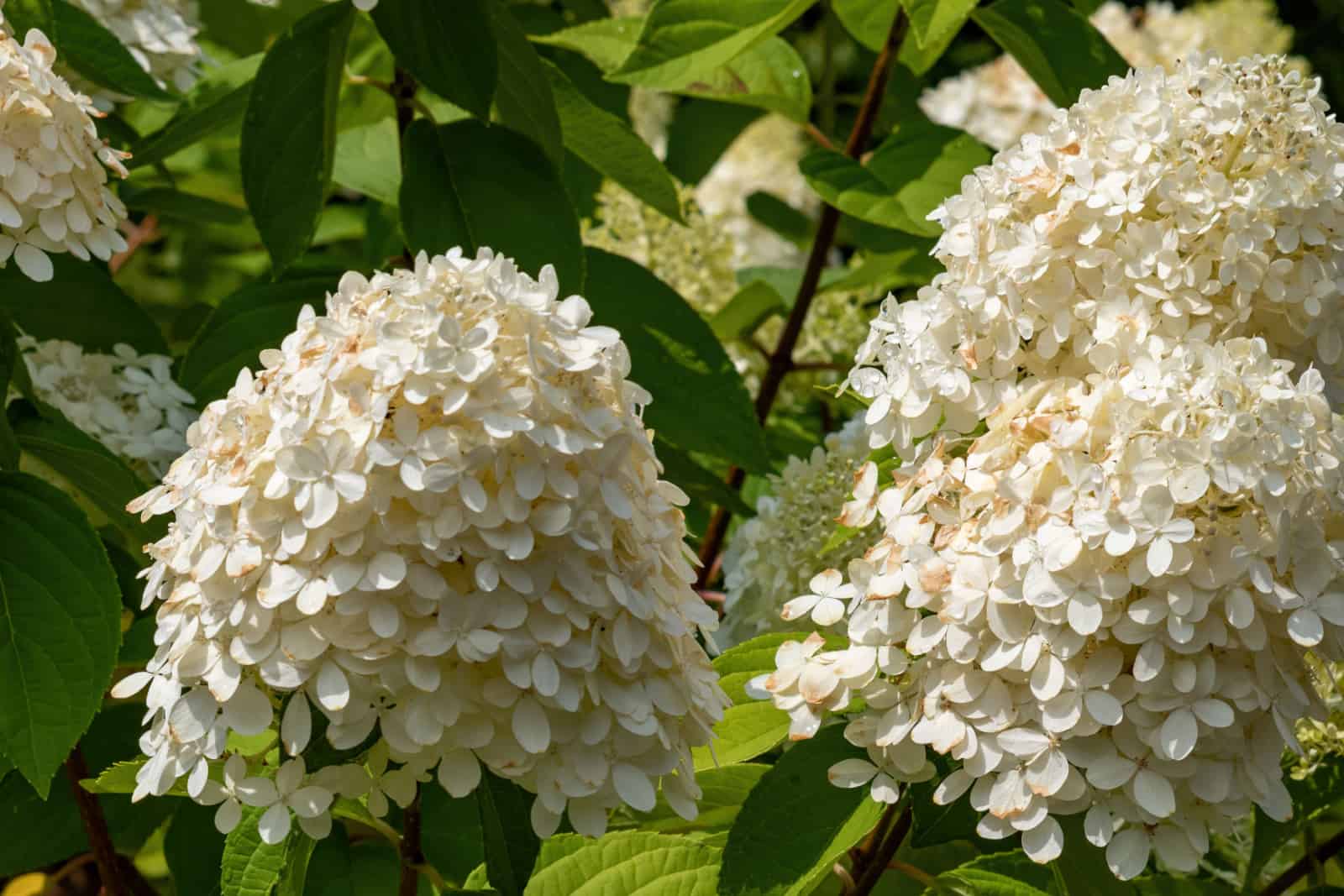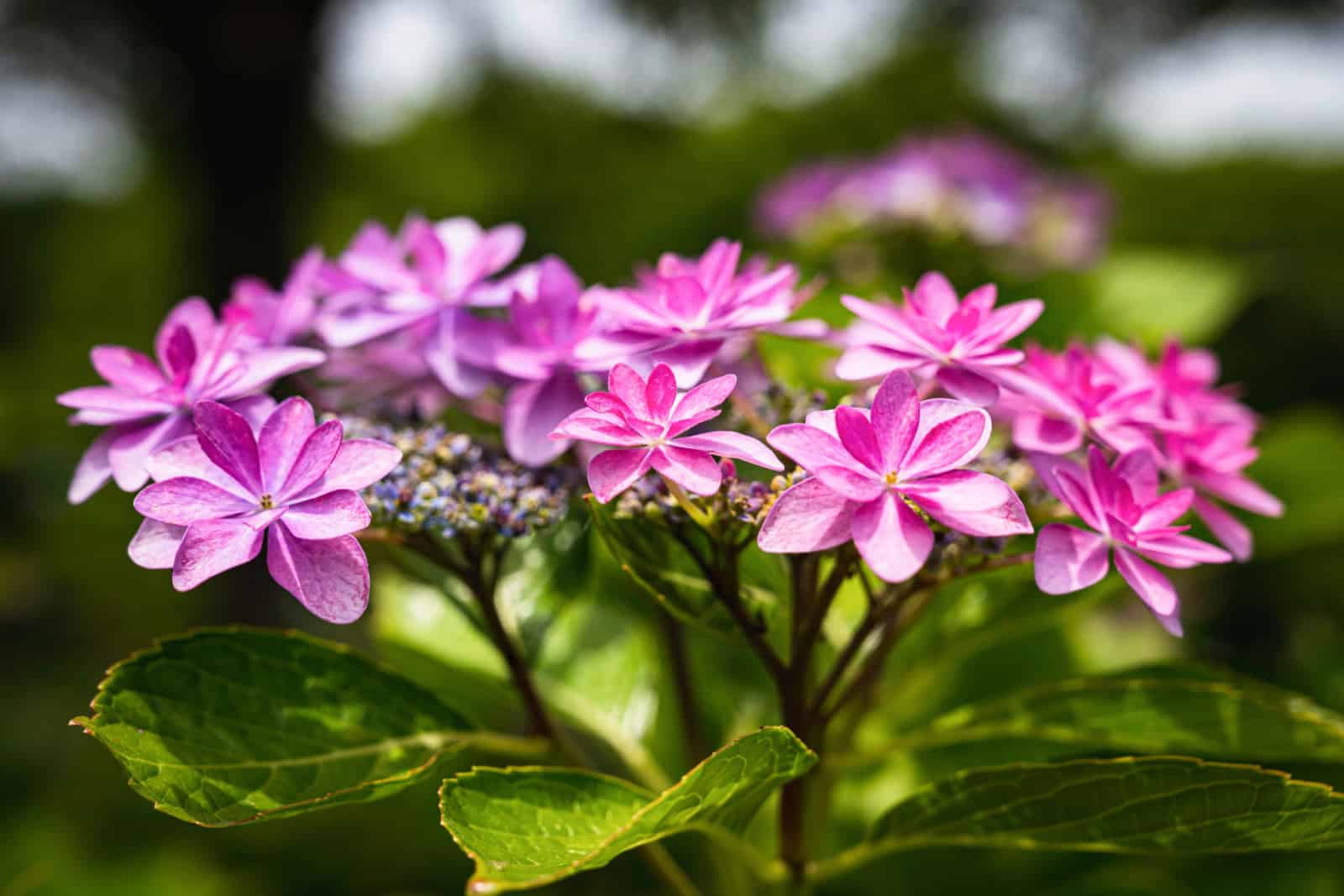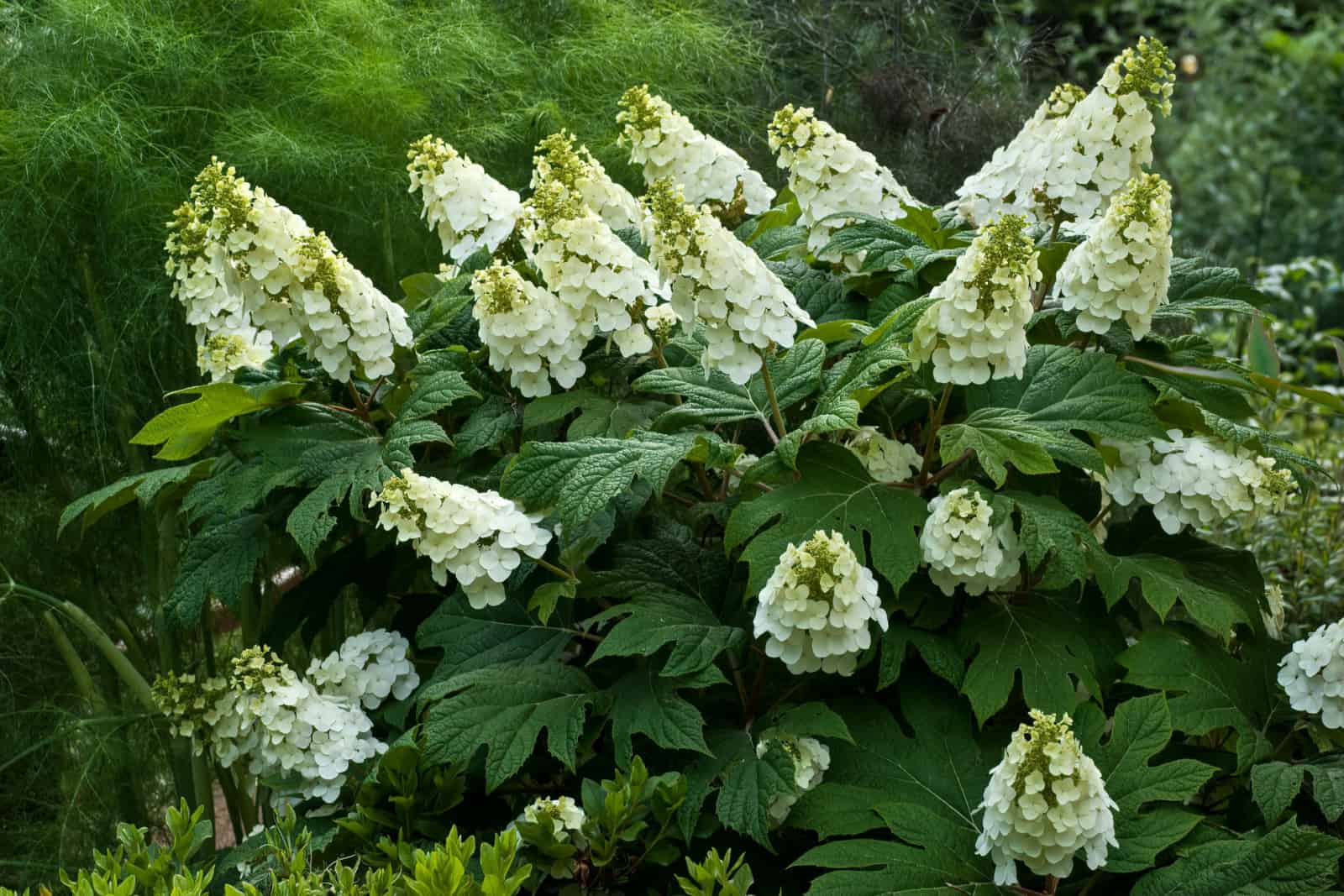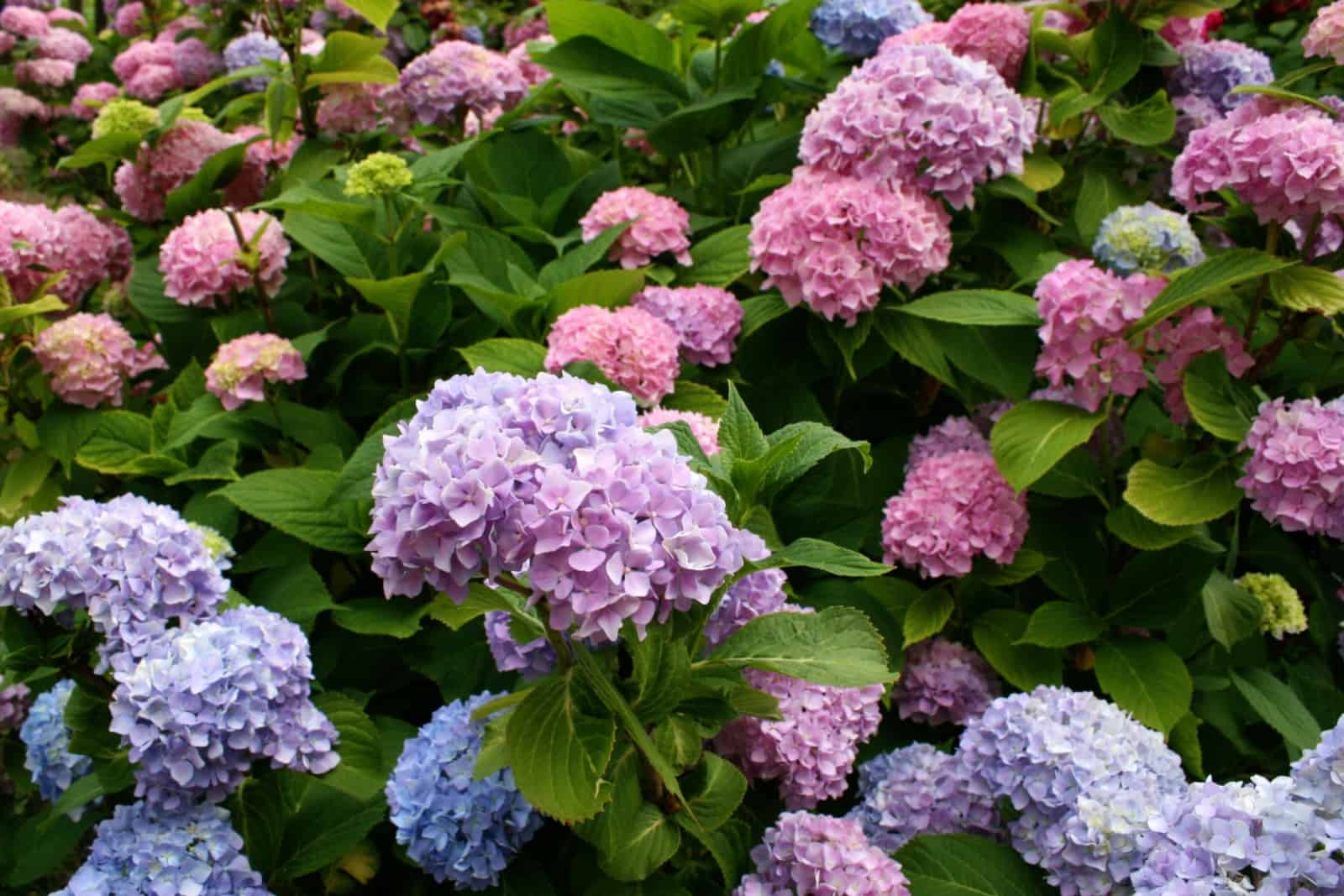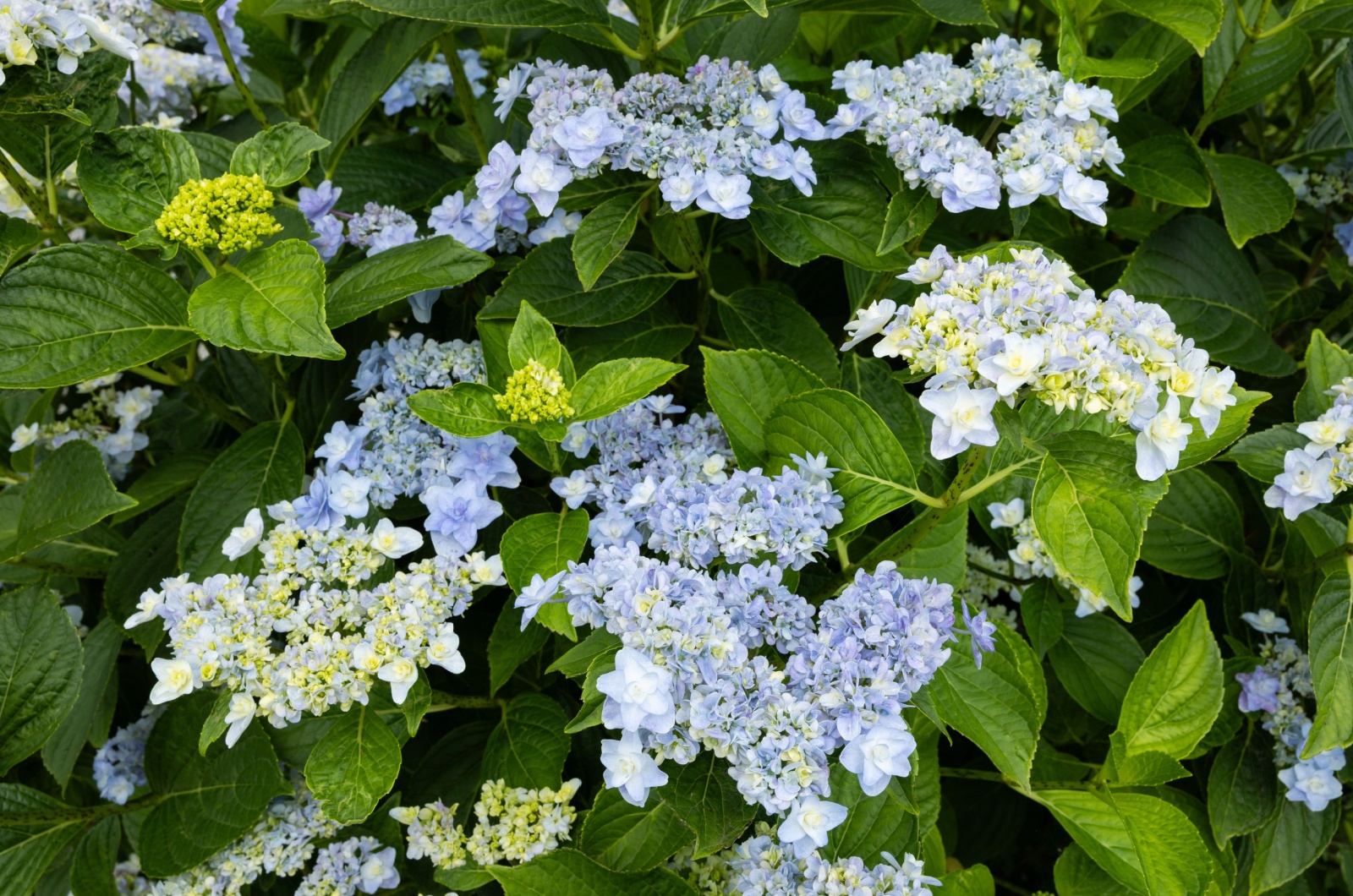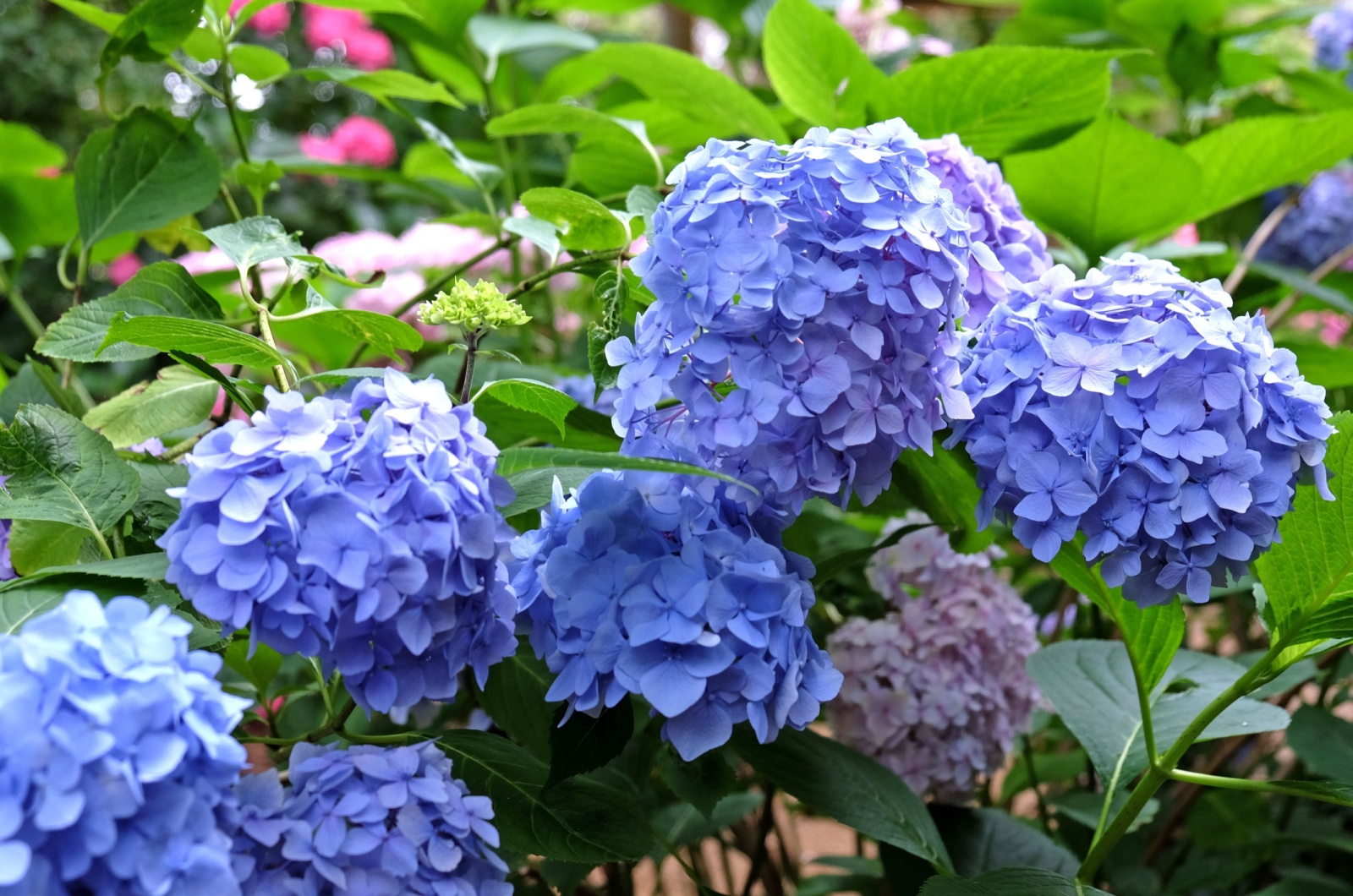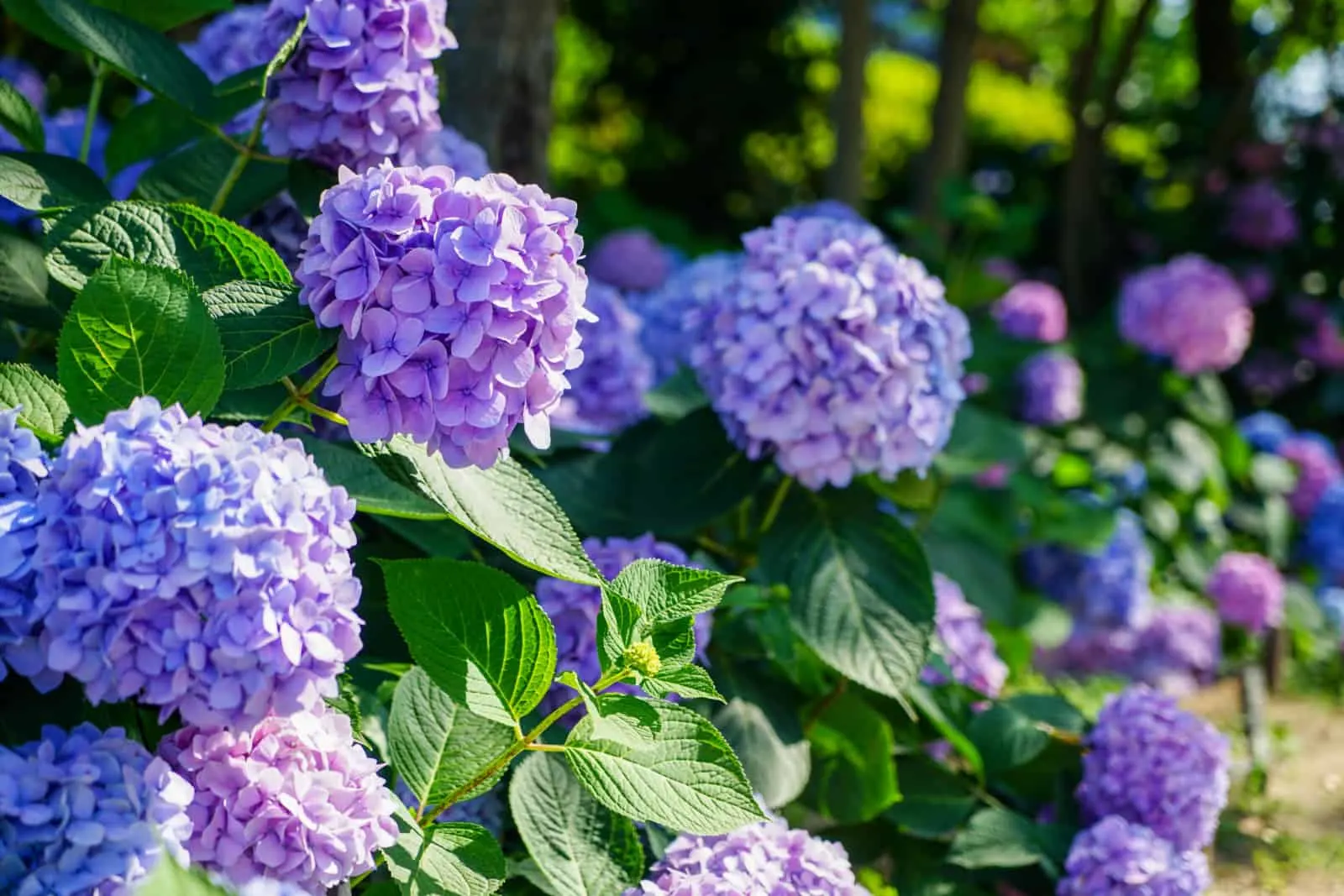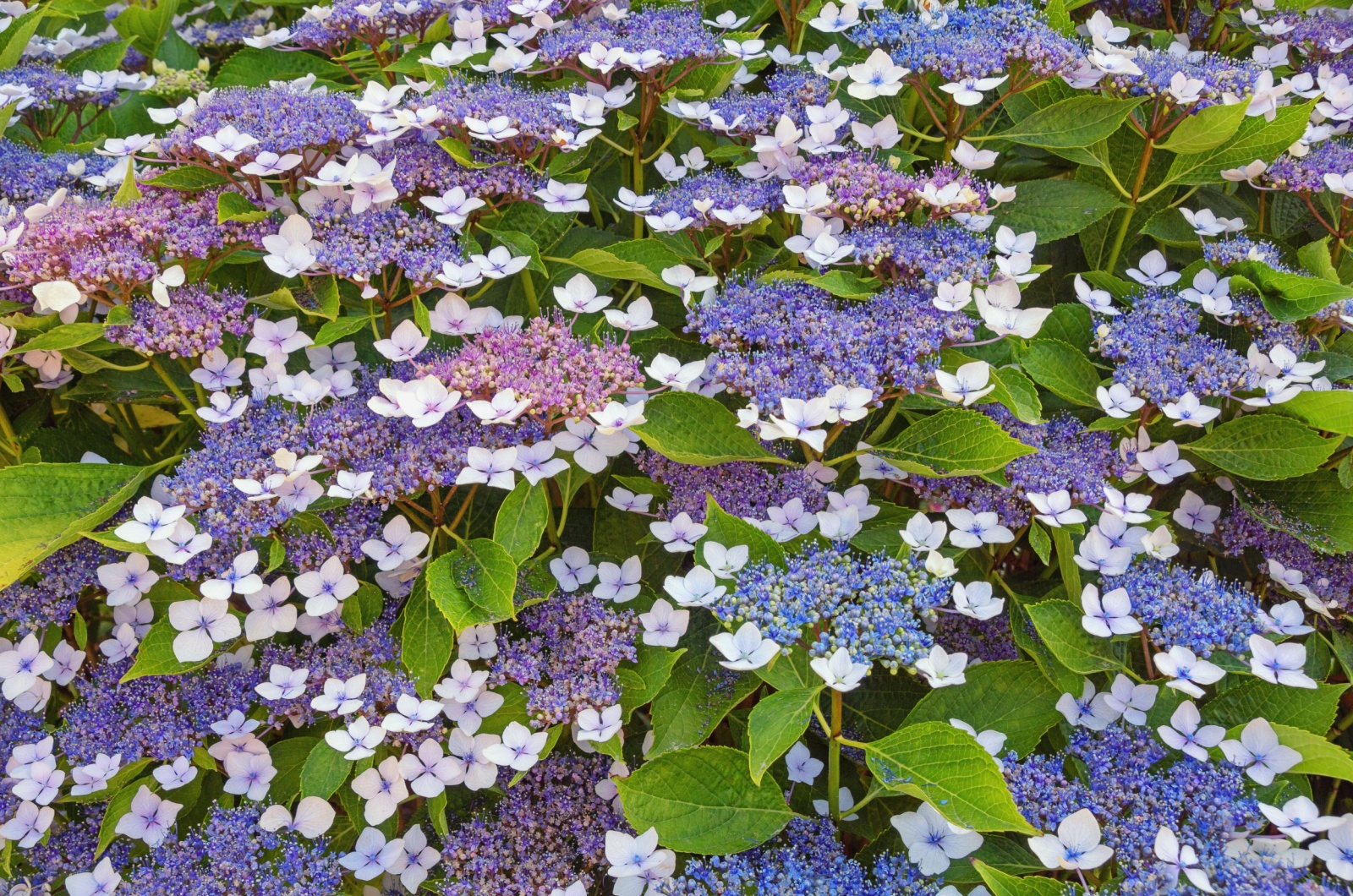The gorgeous blossoms, intricate petals, and enchanting colors of hydrangeas adorn gardens all around the world.
The best thing is that there are many different types of hydrangeas to choose from. With various shapes of blooms and leaves, as well as different growth habits, there is definitely a hydrangea for everyone.
There are 75 species of these gorgeous plants but 6 are commonly cultivated in US gardens.
Let’s dive into the world of hydrangeas!
1. Climbing Hydrangea
If you have an unsightly wall to cover or want to add some vertical interest to your garden, climbing hydrangeas are an excellent option.
This is actually a vining type that uses aerial rootlets to cling to different surfaces. If you provide these hydrangeas with adequate structural support, the vines can reach 30 feet long.
These hydrangeas perform well in USDA hardiness zones 4 through 9 and, unlike most vining plants, tolerate shady areas.
The growing season of these splendid hydrangeas starts in spring. You’ll first notice the unfurling of heart-shaped foliage. In late spring, you can expect the first clusters of captivating and fragrant white blooms.
Spring and summer aren’t the only seasons of interest. In the fall, the leaves turn golden before they fall off, exposing cinnamon-colored bark that looks magnificent in winter.
If you need a privacy plant for your balcony, this hydrangea is the way to go!
2. Smooth Hydrangea
Native to the eastern US, smooth hydrangeas are prized for their large blossoms and robust growth habit. Each flower head can reach up to 8 inches long and consists of tiny, fertile flowers in the center surrounded by larger sterile flowers.
This feature makes smooth hydrangeas fuller, and therefore perfect for hedges and foundation planting.
One of the most interesting features of these blossoms is that they change their hues during their life cycle. They are bright green when they first open at the beginning of the summer. During the peak of the season, they have their recognizable creamy white hue. Once the fall approaches, they turn a tan color.
But blossoms aren’t the only beautiful feature of these hydrangeas. Their leaves are broad and deep green, and the margins are sharply toothed. The term smooth hydrangeas definitely has nothing to do with the leaves!
You can successfully grow these splendid flowers in zones 3 through 9. This species tolerates heat well and can withstand long periods of drought.
They can thrive in sunny and shady locations, but if you live in a hot climate, aim for a spot that receives shade in the afternoon.
3. Panicle Hydrangea
The three main features of these hydrangeas are robust growth, low care requirements, and cold hardiness.
These types grow well in USDA hardiness zones 3 through 8. Your garden will look amazing every season if you decide on these types.
For me, panicle hydrangeas look best in midsummer when the first conical blossom clusters appear.
The white flowers of these hydrangeas will get pink hues in the fall. At the end of the season, you’ll notice another color transition as the pink magically transforms into brown.
The best thing is that these hydrangea blossoms will retain this brown hue throughout the winter. You can use them in floral arrangements during any part of the winter.
Another excellent feature of these hydrangeas is that you can grow some species as trees. Of course, you will need to prune them.
One of the most famous panicle hydrangeas is the Grandiflora species. If you decide on growing these, I recommend the PeeGee variety, which can reach 25 feet tall under optimal conditions.
4. Mountain Hydrangea
The blue or pink blossoms of mountain hydrangeas form into lacecaps. These species won’t exceed 6 feet tall, making them perfect for smaller gardens and borders.
These species are especially suitable for impatient growers because they grow very fast and if you ensure proper growing conditions, you can expect them to grow approximately 2 feet every year.
Speaking of growing conditions, these hydrangea types are less tolerant to cold temperatures and will struggle to grow or fail to survive in USDA zones 5 and lower.
It’s essential to maintain moisture levels in the soil for these hydrangeas. They can tolerate exposure to direct sunlight but grow best in shady spots.
Mountain hydrangeas aren’t as famous as other types but they’re just as beautiful. Preziosa, Bluebird, and Diadem are just some of the captivating varieties of these hydrangea types.
5. Oakleaf Hydrangea
I’m sure you can guess where the name of these hydrangeas comes from; yes, the leaf shape!
Another amazing thing about the leaves is their color. At the end of the growing season, i.e., fall, they turn burgundy, crimson, or orange hues. If you decide on oakleaf hydrangeas, you’ll have an amazing color display in your garden throughout the fall.
The story doesn’t end here. These wonderful leaves will fall off in the winter and expose exfoliating bark, which will add a special touch of beauty.
In addition to captivating foliage, these hydrangeas have even more to offer. At the beginning of the flowering season, they generate an abundance of creamy white blossoms that form conical clusters.
As the season progresses, the magnificent blossoms of oakleaf hydrangeas will turn pink.
Regarding growing requirements, these hydrangeas aren’t fussy as long as you provide them with free-draining soil and protect them from the full sun.
Sun can severely affect the production and appearance of blossoms. However, avoid spots with full shade or the foliage will lose its original fall color.
6. Bigleaf Hydrangea
I saved the best for the end! These are by far the most popular types from the Hydrangea genus. Bigleaf varieties come in various colors, such as blue, white, purple, and pink.
The scientific name is Hydrangea macrophylla but they’re also commonly referred to as French hydrangeas or garden hydrangeas.
These hydrangeas are perfect for cut flowers and flower arrangements, but also look amazing as hedges.
Lacecap and mophead hydrangeas are the two main bigleaf subtypes. Both grow well in zones 6 through 9 and their height varies by variety. In general, their approximate height is somewhere between 2-4 feet.
Let’s find out more about them!
Lacecap Hydrangeas
These hydrangeas feature gorgeous, flat, sterile blooms encircling a small, dense central cluster of fertile florets.
Since the blooms lose their original colors after just one month, consider planting more types of hydrangeas for a longer flower display.
Some of the most beautiful lacecap varieties include Lady in Red, Zorro, and Lanarth White.
Mophead Hydrangeas
These are the most popular types of these plants and feature huge, beautiful blossom clusters in the shape of a ball.
They generate flowers all summer, three to six months before going dormant when temperatures drop.
Sadly, the flower buds are susceptible to cold and can’t endure winter.
My favorite varieties include Charm, Masja (dwarf variety), and Madame Emile Mouillere.
The Best Hydrangea Type For Your Landscape
I know it’s hard to choose the perfect hydrangea since they all look breathtaking. However, you need to consider a few factors before you start growing.
The first factor is the climate. For instance, if you live in a colder climate, then panicle or smooth hydrangeas are the best choices.
If you don’t have a lot of space in your garden, then mountain hydrangeas are more suitable.
Of course, it’s also up to your personal preference. If you want your garden to have colors throughout all the seasons, then bigleaf and mountain hydrangeas are the best.
Remember that all hydrangeas have one thing in common, they all love partial shade. Don’t forget to feed your hydrangeas to encourage them to produce an abundance of blossoms and develop healthily.
Lesser-known Hydrangea Varieties
Are there any hydrangea varieties that aren’t popular but can be grown in America? Definitely, and here are my top picks:
1. Hydrangea aspera: Huge, fuzzy foliage adorns these hydrangeas along with flattened clusters of gorgeous flowers.
2. Hydrangea involucrata: The blossoms of this variety are tiny and rounded, and surrounded by delicate bracts that resemble lace.
3. Silver Dollar Hydrangea: White flowers and silverish foliage make the Silver Dollar Hydrangea one of the most beautiful.
4. Miranda: Interestingly, the Miranda has variegated foliage with yellow or creamy white edges, and generates lovely white lacecap blossoms.
5. Japanese Hydrangea Vine: This is a close relative of climbing types but not as popular. So, if you want to make your garden unique, this variety will do the job.
One thing is for certain; you’ll get a stunning display of gorgeous flower clusters no matter which type of hydrangea you select.
Until next time!

